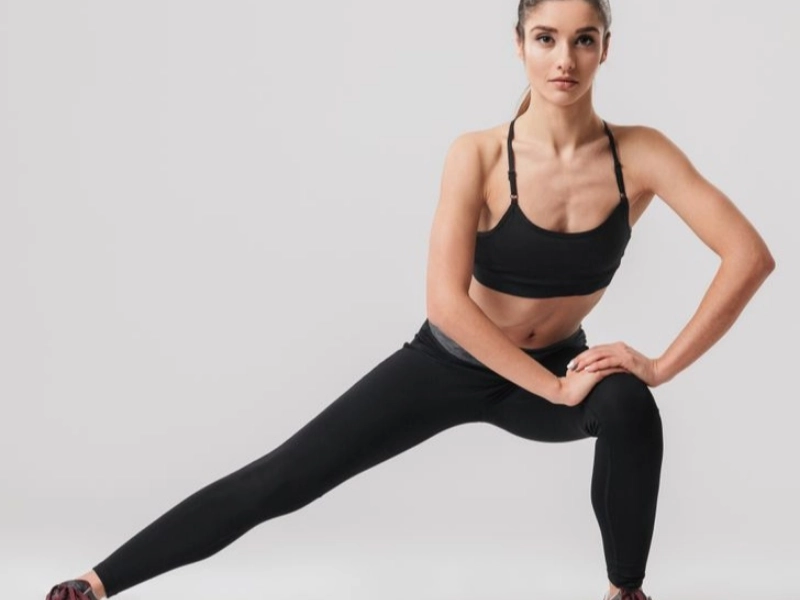Advertisement
5. Side lunge

Advertisement
This exercise, often referred to as a Side Lunge, is an effective way to target the hip flexors, quadriceps, and hamstrings. It's a great way to improve lower body flexibility, strength, and overall mobility.
To begin, stand with your feet shoulder-width apart, your core engaged, and your shoulders back. Take a large step to the right with your right foot, keeping your left leg extended and your left foot pointing slightly outward.
As you step out with your right foot, bend your right knee at a 90-degree angle, ensuring that your knee is directly over your ankle. Your left leg should remain extended, with your left foot flat on the floor. Lean your upper body slightly forward, keeping your back straight and your gaze focused straight ahead.
You should feel a stretch through the front of your left hip and quadriceps, as well as a contraction in the muscles of your right leg, including your quadriceps, hamstrings, and glutes.
Maintain this side lunge position for 25-30 seconds, breathing deeply and evenly throughout. Avoid holding your breath, as this can create tension in the body. Instead, focus on relaxing your muscles and allowing the stretch to deepen with each exhale.
After holding the pose for the desired duration, slowly step your right foot back to the starting position, and repeat the same sequence on the opposite side, lunging out with your left leg. Again, focus on maintaining proper form and engaging the targeted muscle groups.
This exercise is particularly beneficial for individuals who spend a lot of time sitting or engaging in activities that require repetitive movements, as it can help counteract the effects of muscle imbalances and improve overall lower body flexibility and strength.
By regularly incorporating the Side Lunge into your routine, you can improve your overall mobility, reduce the risk of injury, and enhance your physical performance in other activities, such as running, cycling, or sports that involve lateral movements.
Remember to listen to your body and adjust the intensity of the exercise as needed. If you experience any pain or discomfort, stop the exercise immediately and consult a healthcare professional.
